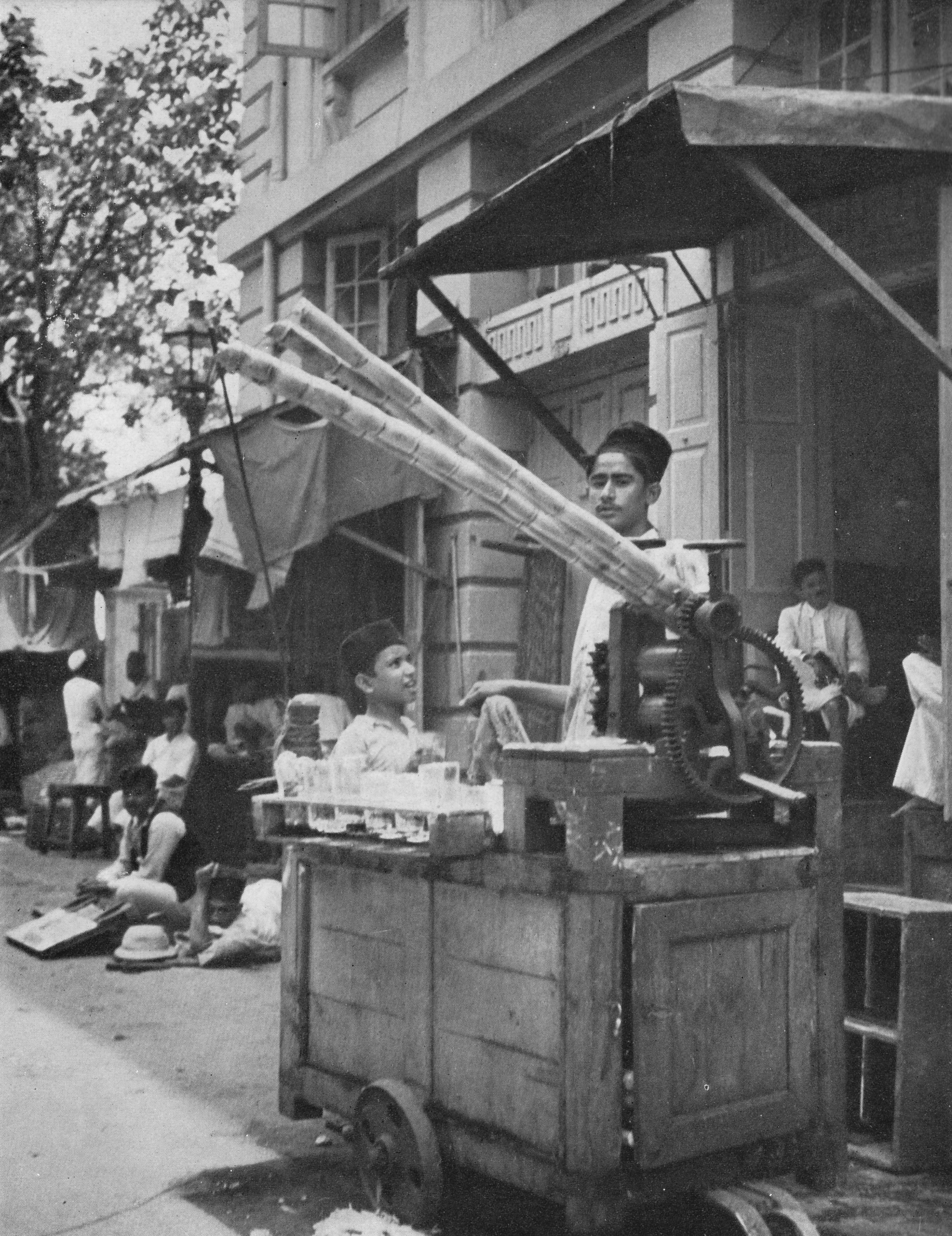Archive
https://archive.metromod.net/viewer.p/69/2951/object/5140-12057990
Archive
Pictorial Bombay
- Guidebook
- Pictorial Bombay
Word Count: 2
- Ernst N. Schaeffer
- New Book Co.
- 1936
Travel guide in booklet form (76 pages; text & 40 black and white whole-page photos, 9 small black and white photos)
New Book Co., Kitab Mahal, Hornby Road, Fort, Mumbai (192 Dr. Dadabhai Naoroji Road, Kitab Mahal, Mumbai, Maharashtra 400001, India)
- English
21.5cm x 16.5cm
- Mumbai (IN)
The guidebook Pictorial Bombay is a light-hearted portrayal of Bombay and its inhabitants as seen by an outsider, the German emigrant Ernst Schaeffer, through photos and texts in 1936.
Word Count: 28

Front cover of Pictorial Bombay (Photo: Margit Franz 2021). 
Ernst Schaeffer, Sugar Cane Juice Presser (Pictorial Bombay, p. 27; Photo: Margit Franz 2021). 
Ernst Schaeffer, Null Bazaar (Pictorial Bombay, p. 31; Photo: Margit Franz 2021). 
Ernst Schaeffer, View from the Jogeshwari Caves (Pictorial Bombay, p. 60; Photo: Margit Franz 2021). 
Ernst Schaeffer, Apollo Bunder (Pictorial Bombay, p. 73; Photo: Margit Franz 2021). 
Ernst Schaeffer, Mumbadevi Temple (Pictorial Bombay, p. 38; Photo: Margit Franz 2021). Anonymous. “Schäffer, Ernst (1892–1978) .” Kalliope-Verbund, kalliope-verbund.info/gnd/117099600. Accessed 30 June 2021.
Franz, Margit. Gateway India: Deutschsprachiges Exil in Indien zwischen britischer Kolonialherrschaft, Maharadschas und Gandhi. CLIO, 2015.
Franz, Margit and Rachel Lee, “An Exile’s Guide: Ernst Schaeffer’s Pictorial Bombay and the Construction of Bombay’s Touristscape.” Urban Exile: Theories, Methods, Research Practices, edited by Burcu Dogramaci et al., Intellect Ltd., forthcoming 2022.
Ganor, Sheer and Rebekka Grossmann, “Displacement in Stills: German-Jewish Photographers on the Move.” Migrant Knowledge, May 14, 2021, migrantknowledge.org/2021/05/14/displacement-in-stills/. Accessed 24 July 2021.
Krishnamoorthy, Kaushalya. India and the Exile Experience as Mirrored in the Writings of Jewish Exiles and Indian Writers. Doctoral thesis, Wayne State University, 2003. ResearchGate, www.researchgate.net/publication/34976696_India_and_the_Exile_Experience_as_Mirrored_in_the_Writings_of_Jewish_Exiles_and_Indian_Writers. Accessed 20 March 2021.
Reiter, Andrea. “Diaspora und Hybridität: Der Exilant als Mittler.” Diaspora – Exil als Krisenerfahrung. Jüdische Bilanzen und Perspektiven (Zwischenwelt Jahrbuch, 10), edited by Armin Eidherr et al., Drava Verlag, 2006, pp. 36–51.
Roth, Helene “‘First Pictures’: New York through the Lens of Emigrated European Photographers in the 1930s and 1940s.” Contact Zones: Photography, Migration and Cultural Encounters in the United States, edited by Justin Carville and Sigrid Lien, Leuven University Press, 2021, pp. 111–132.
Schaeffer, E.N. Pictorial Bombay. New Book Co., [1936].
Schaeffer, Ernst Nathan. “Feast in Bhopal. A Marriage Unites Two of India’s Leading Muslims.” Life, 19 June 1939, pp. 44–48.
Schaeffer, Ernest N. “Emigrantenleben in Indien.” Aufbau, vol. 7, no. 18, 2 March 1941, p. 7.
Shaffer, Ernest N. Ein Emigrant entdeckt Indien. Verlag Information und Wissen, 1971.
Voigt, Johannes H. “Die Emigration von Juden aus Mitteleuropa nach Indien während der Verfolgung durch das NS-Regime.” Wechselwirkungen, Jahrbuch aus Lehre und Forschung der Universität Stuttgart, 1991, pp. 83–95.
Word Count: 275
Private Archive Margit Franz, Sinabelkirchen
The Times of India [Mumbai] Archive on ProQuest, via Staatsbibliothek zu Berlin:
https://staatsbibliothek-berlin.de/recherche/elektronische-ressourcen. Accessed 30 June 2021.Word Count: 23
- Bombay
- Margit Franz; Rachel Lee. "Pictorial Bombay." METROMOD Archive, 2021, https://archive.metromod.net/viewer.p/69/2951/object/5140-12057990, last modified: 21-09-2021.
-
Ernst N. SchaefferJournalistPhotojournalistTour GuideEditorRadio ModeratorNewspaper CorrespondentBombay
In exile Ernst Schaeffer diversified his journalistic practice and developed an understanding of Bombay through walking the city streets, taking on street-level-photography and photojournalism.
Word Count: 24
New Book Co.Publishing HouseBook ShopBombayThis bookstore was a hub for Bombay's creatives and intellectuals.
Word Count: 10